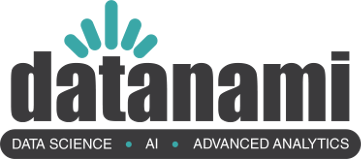
(apixelstudio/Shutterstock)
Embedded analytics and AI are critical to the future of big data. While we have taken giant strides since the big data revolution began, some key challenges remain. There has been a lack of tools that provide non-technical users the opportunity to impact business through data. Sisense has been at the forefront of trying to close this information access gap through embedded analytics, and now it has taken another stride forward.
Sisense today unveiled a public preview of the Compose SDK for Fusion to help empower developers to build insights-driven products. With over 15 years as a leader in embedded analytics, Sisense now enters a new developer-first era with more developer-centric products on the way. Compose SDK for Fusions demo code is now available for developers in Sisense’s GitHub Monorepo.
Founded in 2004, Sisense has a globally distributed workforce around the world. The company’s flexible analytics platform has over 19 patents and enables customers like Nasdaq and Zoomfino to infuse actionable insights into their customer experiences.
The Compose SDK for Fusion toolkit will provide product leads and developers with the flexibility to embed context-aware analytics in a scalable, code–first, and modular way. This will help reduce maintenance overhead, accelerate the development process, and save valuable time compared to coding analytics from scratch.
According to Gartner®, “By 2025, 60% of new SaaS designs will support both the UI-first and API-first access, making preparedness for composability a common cloud application trait.” Also, “by 2025, 60% of the new custom business applications will be built using reusable business services via a shared curated component catalog or marketplace.”
Gartner predicts that businesses will prioritize modular applications to support the accelerated pace of innovation and change. The modular applications help deliver their functionality as API/event-first components.
Ariel Katz, CEO of Sisense said, “We believe that this new era of composable modern apps is fundamentally changing how applications are developed and delivered. Agile and modular, these apps seamlessly integrate insights data, and operations at their core. At Sisense, we’ve been a leader in embedded analytics for years. Now, we’re evolving our battle-proven analytics platform to be developer-first, enabling true data insights app composition, all while maintaining our existing low and no-code capabilities.”
Ayala Michelson, Chief Product Officer at Sisense said, “Compose SDK for Fusion accelerates time to value with a modular, flexible, API-first approach built on the foundation of a complete componentized architecture. Today’s developers seek greater control and integration that aligns with their unique development practices and CI/CD pipelines. This has ignited a surge in demand for developer-first analytics”.
She further added, “We help developers unleash their creativity, so they can give their customers decision-making confidence through insights when and where they need them.”
Benefits offered by Compose SDK for Fusion
With SDK Fusion developers have the freedom to use existing tech stack. The SDK libraries are designed to work with a variety of frameworks, tools, and development environments already in use. In addition, Compose SDK helps accelerate development time and reduce maintenance workload. The toolkit powers faster developments with purpose-built analytics components for data exploration, charting, querying, and other applications.
Perhaps the greatest benefit of Compose DSK is its dev-first approach. Developers can use it to build analytics experience into their products with intuitive components. They can also use the detailed examples, robust documentation, and helpful tools offered by Compose SDK.
Related Items
Why Embedded Analytics Are the Foundation of a Successful Application
Sisense Announces CEO Transition and Key Promotions; Hits Major Financial Milestones
Best Practices for Building a Data Product with Embedded Analytics
A
May 3, 2024
- IDC: Structured Database Workloads Drive Major IT Infrastructure Spending in Late 2023
- Oracle Database 23ai Brings the Power of AI to Enterprise Data and Applications
- Solodev Debuts Advanced AI Services to Boost Cloud-Based App Development
- Sigma Announces AI Toolkit for Business and Launches Sigma Actions to Support Custom Data Applications
- New Salesforce White Paper Tackles LLM Security Risks
May 2, 2024
- Informatica to Welcome Data and AI Visionaries at Informatica World 2024
- Tealium for AI Launches to Address Data Readiness and Governance Challenges in AI Projects
- Eviden to Launch Applied AI and Edge AI Training Center in Collaboration with NVIDIA and UMBC Training Centers
- Airbyte Introduces Comprehensive Partner Program to Enhance Data Movement Services
- Dremio Enhances SQL Engine Capabilities for Optimal Performance in Data Analytics
- Galileo Introduces Protect, a Real-Time Hallucination Firewall to Safeguard Enterprise Generative AI
- LakeChime: A Data Trigger Service for Modern Data Lakes
- Confluent Unveils New Capabilities to Apache Flink Including Freight Clusters for Cost-Effective Data Handling
- Satellogic Releases Open Dataset for AI Model Training
- Tableau and Databricks Expand Strategic Partnership
May 1, 2024
- Quantum Corporation Launches Quantum GO with New Subscription Model for Data Management
- Exovera Enhances exoINSIGHT with Advanced Data Exploration and Collection
- Predactiv Unveils New Platform for Enhanced Data Integration and Analysis
- Deloitte and Google Public Sector Introduce New GenAI Platform for Smarter Government Solutions
April 30, 2024
Most Read Features
Sorry. No data so far.
Most Read News In Brief
Sorry. No data so far.
Most Read This Just In
Sorry. No data so far.
Sponsored Partner Content
-
Get your Data AI Ready – Celebrate One Year of Deep Dish Data Virtual Series!
-
Supercharge Your Data Lake with Spark 3.3
-
Learn How to Build a Custom Chatbot Using a RAG Workflow in Minutes [Hands-on Demo]
-
Overcome ETL Bottlenecks with Metadata-driven Integration for the AI Era [Free Guide]
-
Gartner® Hype Cycle™ for Analytics and Business Intelligence 2023
-
The Art of Mastering Data Quality for AI and Analytics
Sponsored Whitepapers
Contributors
Featured Events
-
AI & Big Data Expo North America 2024
 June 5 - June 6Santa Clara CA United States
June 5 - June 6Santa Clara CA United States -
CDAO Canada Public Sector 2024
 June 18 - June 19
June 18 - June 19 -
AI Hardware & Edge AI Summit Europe
 June 18 - June 19London United Kingdom
June 18 - June 19London United Kingdom -
AI Hardware & Edge AI Summit 2024
 September 10 - September 12San Jose CA United States
September 10 - September 12San Jose CA United States -
CDAO Government 2024
 September 18 - September 19Washington DC United States
September 18 - September 19Washington DC United States



























